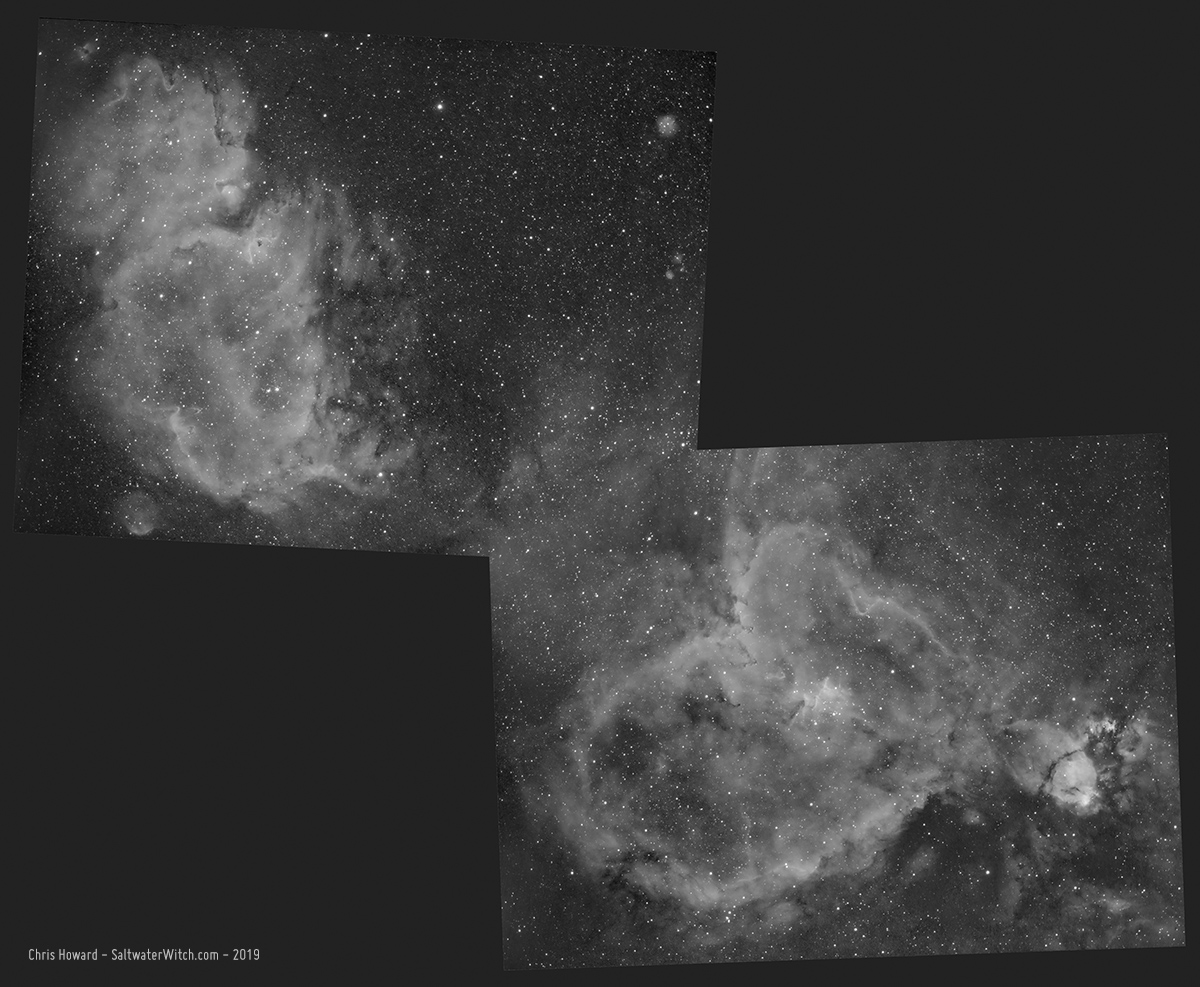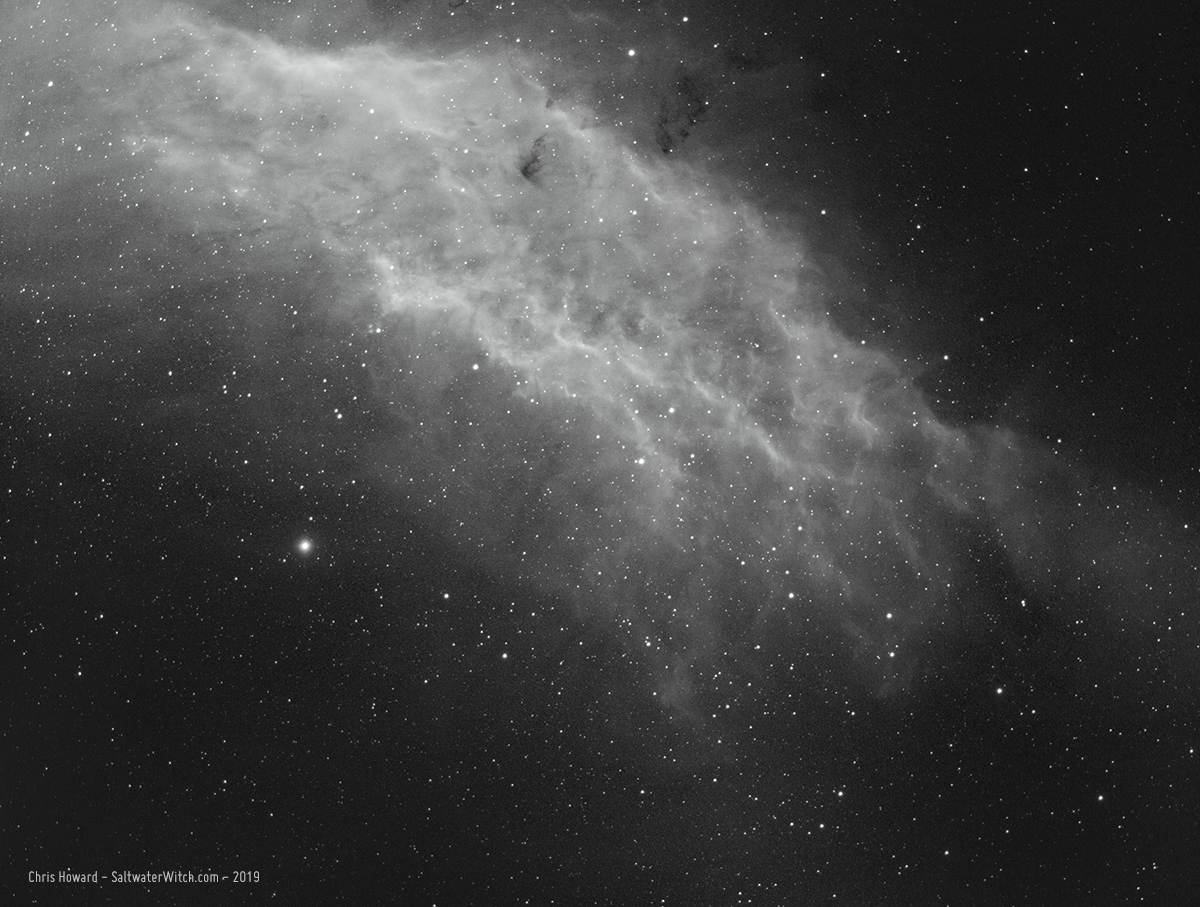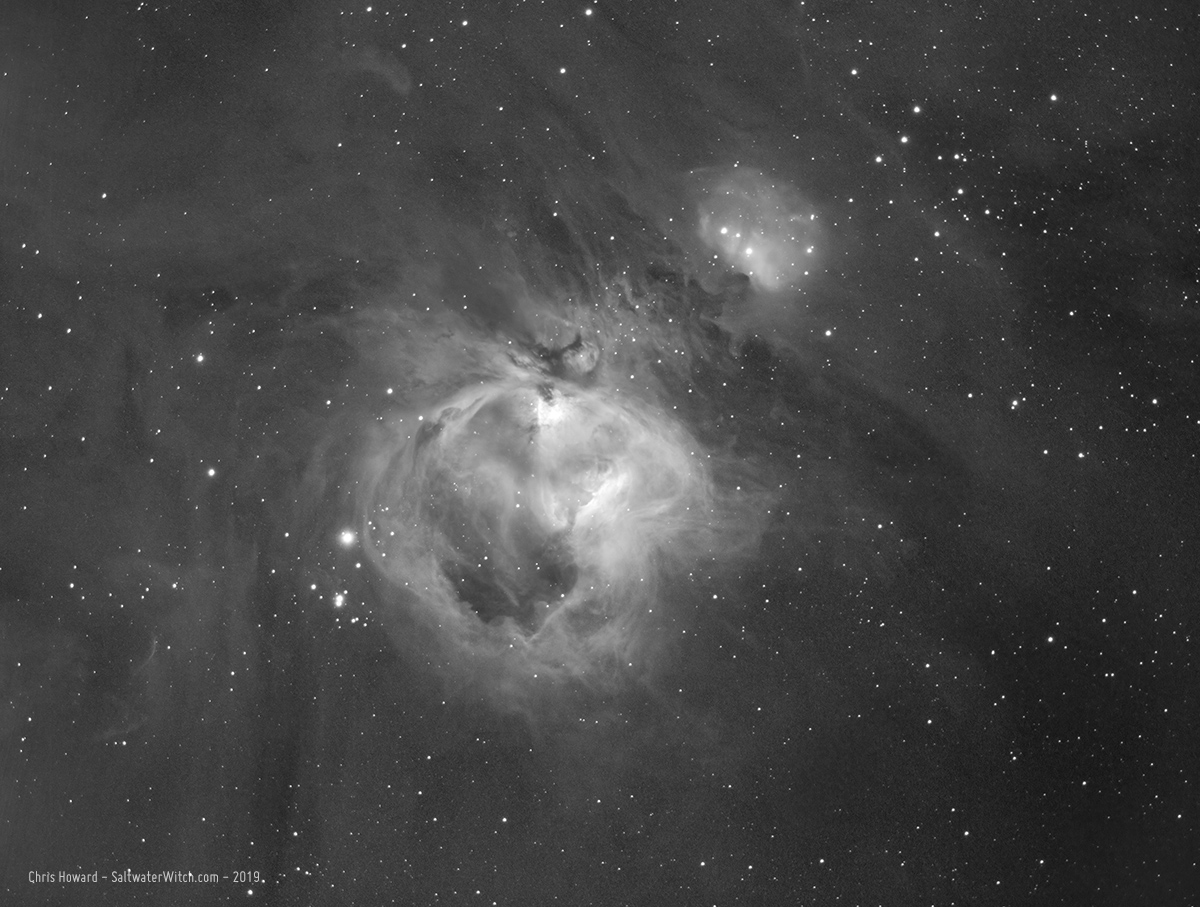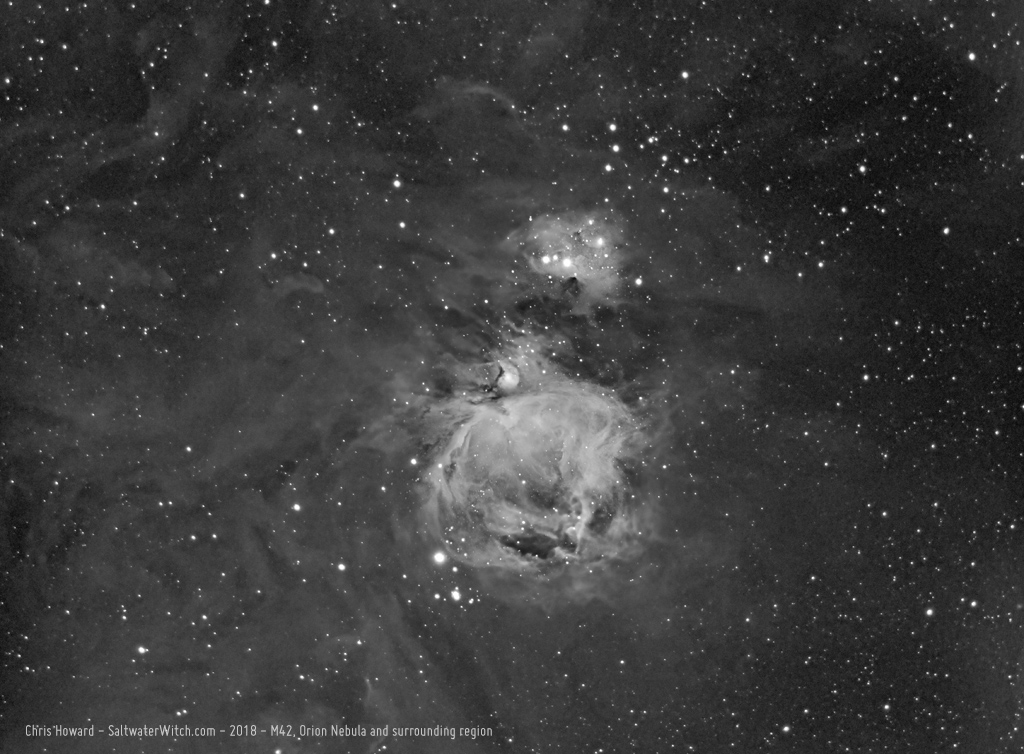California Nebula in Hydrogen-alpha
The California Nebula (NGC 1499) in the Constellation Perseus is relatively close to us, about 1000 lightyears away in the Orion Arm of our galaxy (Milky Way), and it's roughly a 100 lightyears in length, so what you see here, top to bottom, is about 600 trillion miles of ionized hydrogen. NGC 1499 is a good-sized emission nebula, about 2.5° in length from our view on Earth. To put that into perspective, a full moon is 1/2°, so the California Nebula is about 5 full moons long in the sky.
Imaging session notes: 50 x 240 second subs, stacked in DSS, processed in PS 2021. SkyWatcher EQ6-R Pro mount, William Optics GT81 Apochromatic Refractor 392mm at f/4.7, ZWO ASI1600MM-Pro monochrome camera, Astronomik 6nm Ha filter, Controller: Raspberry Pi 4 4GB / 128GB running INDI/KStars/Ekos.

Posted November 10, 2020
High-gain Test - Gathering Narrowband Data
Autumn is officially here, and this is the season of the Pleiades, Orion, the nebulae in the constellations of Perseus, Monoceros, Auriga, Taurus, and Gemini. Now, M42 isn't in view until 2am, so that had to be the last in the sequence. And, yes, you can tell I was just dorking around with filters with our galactic neighbor, Andromeda M31, in near IR and hydrogen-alpha. I know M31 is a decent Ha target, and you can see some wonderful images in Ha-RGB out there in the world, but I had never tried shooting 2-minute subs of M31 with a 685nm long pass filter.
I ran the ZWO ASI1600MM-Pro mono CMOS camera at a gain of 200 and offset of 65 in the following shots. And no calibration frames for any of these. Higher gain reduces dynamic range, but you're also reducing read noise and gaining (ha ha) resolution and the ability to shoot shorter exposures--and more of them, and if you take enough subs, this should balance things out. There are miles of discussion on gain and offset in astro-imaging, but I was recently reading Jon Rista's comments in an astrobin forum thread and that got me to test out higher gain/offset.
M31 in Near-IR + Ha

I moved over to Cassiopeia and shot 40 x 4-minute subs each of IC 1805 (Heart Nebula) and IC 1848 (Soul Nebula) in Hydrogen-alpha. Here's the stitched together pair:

Still waiting for Orion to get above 30°, I spent some time on NGC 1499 "California Nebula"

And Orion is back in the sky! Sure, you have to get up at 3 in the freakin' morning to see it with your own eyes. Or you can program your astro imaging system to stay up all night and take pictures without you. Here's M42, Orion Nebula, along with M43, De Mairan's Nebula--that's the spherical-looking cloud formation with the big bite taken out of it. And above that, shining brightly, Sh2-279 Running Man Nebula--although the famous running man shape isn't clear in hydrogen alpha. I'm not sure how well it comes out with oxygen III and sulfur II, but I'll come back another night to capture the OIII and SII frames. Notes: 31 x 240 second exposures in Ha + 20x 10 second subs just for the Trapezium (the super bright core of the Orion Nebula--so bright I have to take separate short exposure shots and merge it back in processing). William Optics GT81 APO refractor, ZWO ASI1600MM-Pro mono camera, Astronomik 6nm Ha filter.

Posted September 26, 2019
Astro Session with the new ZWO ASI1600MM-Pro
Wide-field of M42, the Orion Nebula--and it's amazing how cloudy and dusty the whole area is. I spent half the night adjusting things--focus distance, off-axis guider spacing, but managed to capture M42 and the surrounding region (two sets of subs: 21 x 300 second, and 20 x 20 second for the bright Nebula core and Trapezium). Calibration frames: 20 Dark and 20 Bias, No flat frames. I shot these with the ZWO ASI1600MM-Pro monochrome camera, Astronomik 12nm Ha filter, William Optics ZS61 APO, iOptron CEM25P mount.

I also managed to capture a dozen frames of the California Nebula:

